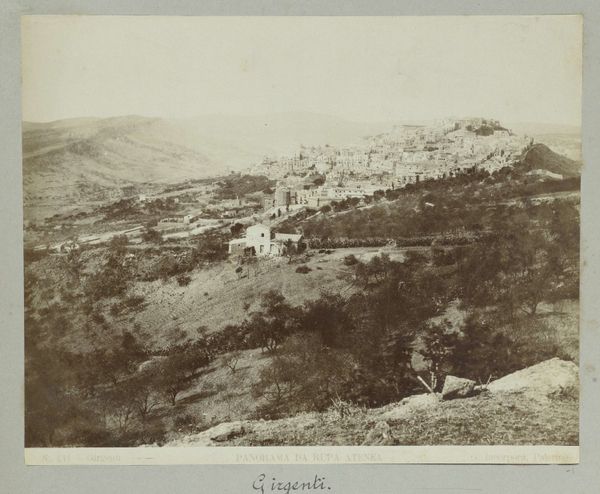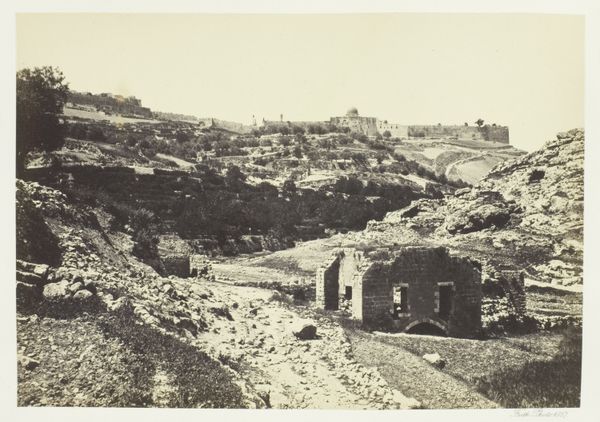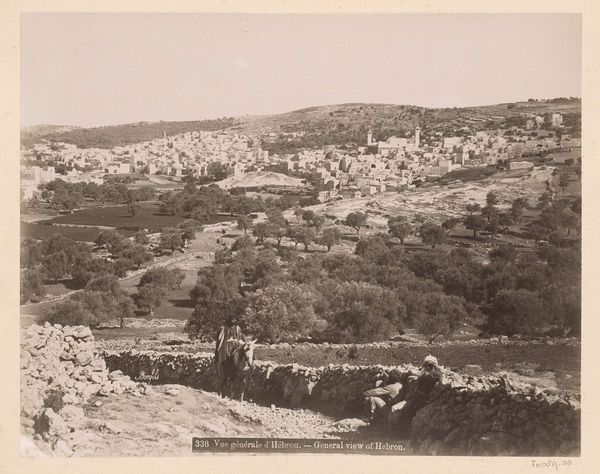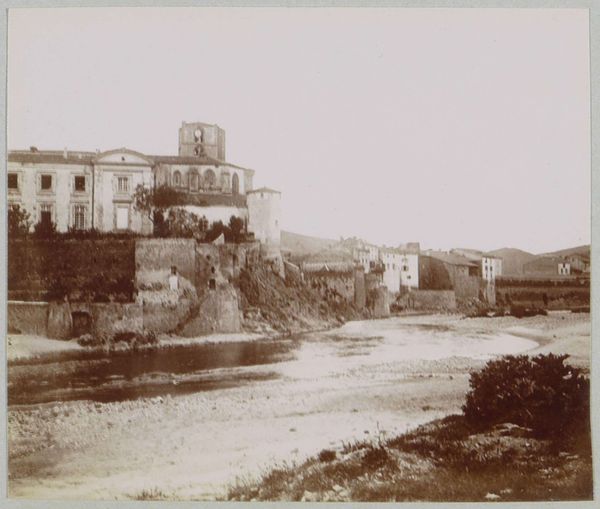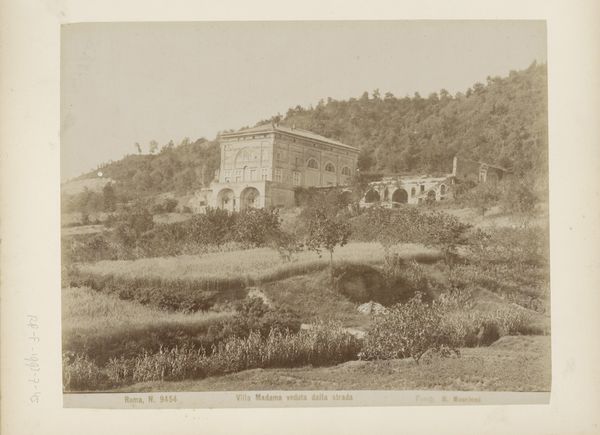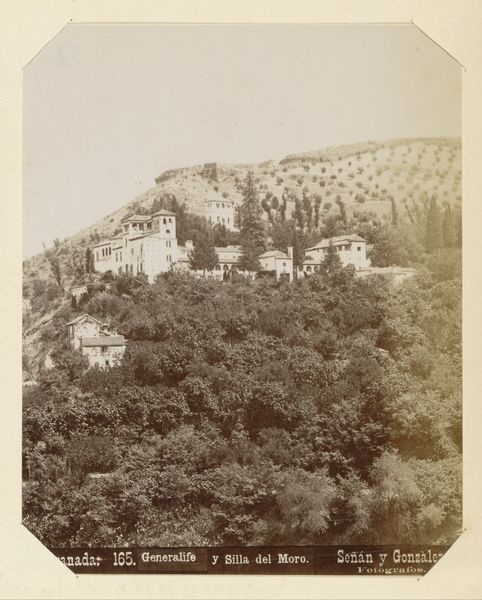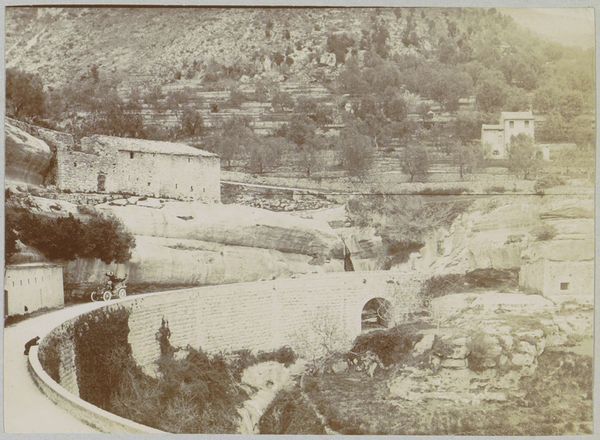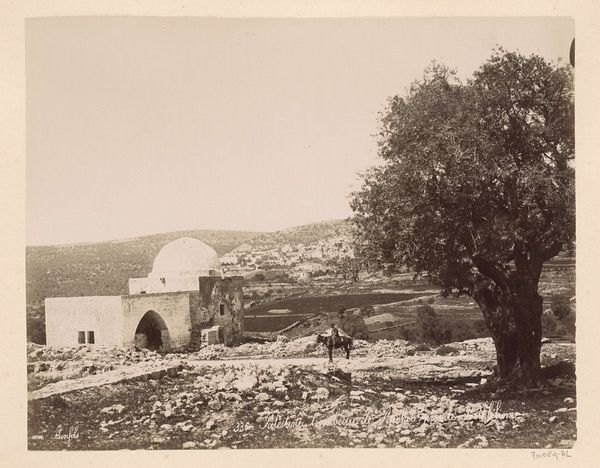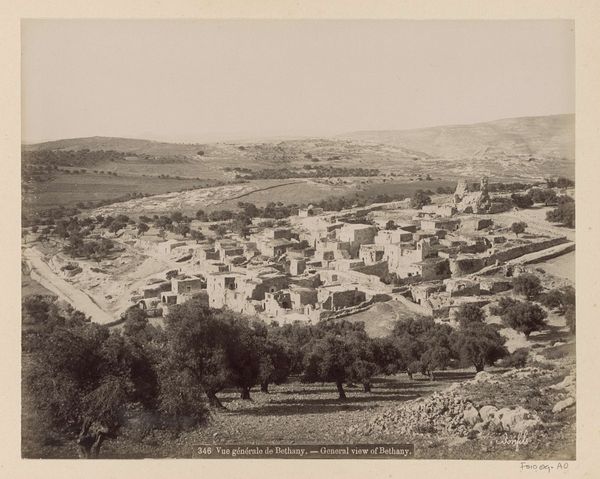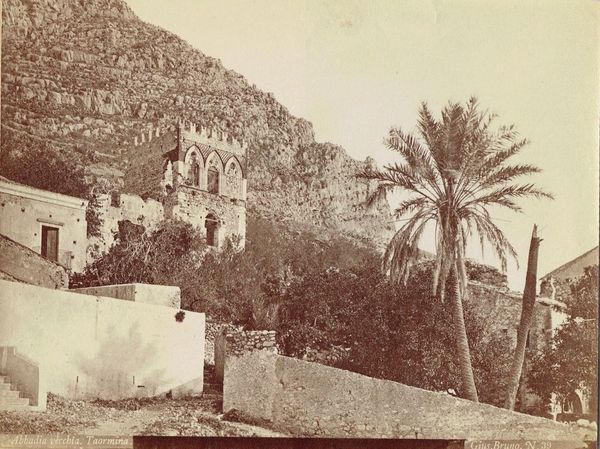
print, photography
# print
#
landscape
#
photography
#
ancient-mediterranean
Dimensions: height 82 mm, width 110 mm
Copyright: Rijks Museum: Open Domain
This photograph of the Klooster van Daphni in Attica was captured by Johannes Lodewijk Heldring. The image itself is a product of the wet collodion process, a 19th-century photographic technique known for its sharp detail and tonal range. The process begins with coating a glass plate with a light-sensitive emulsion, then exposing it in a camera. The resulting negative is developed and printed, resulting in this sepia-toned print. This process wasn’t as simple as pointing and shooting: it required careful preparation, precise timing, and a portable darkroom. Heldring, as the photographer, would have been something of a traveling alchemist. Note the way the light catches the stone walls and the dome of the monastery. The texture of the landscape is palpable. It's a testament to the skill of the photographer, but also to the inherent qualities of the wet collodion process, which captured every detail with remarkable clarity. This photograph is more than just a record of a place, it is the result of a complex interplay between chemistry, light, and human skill.
Comments
No comments
Be the first to comment and join the conversation on the ultimate creative platform.

